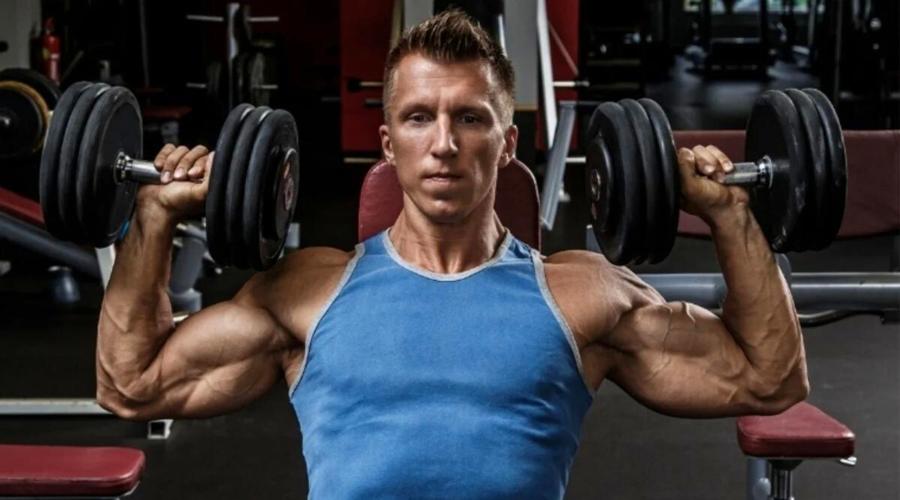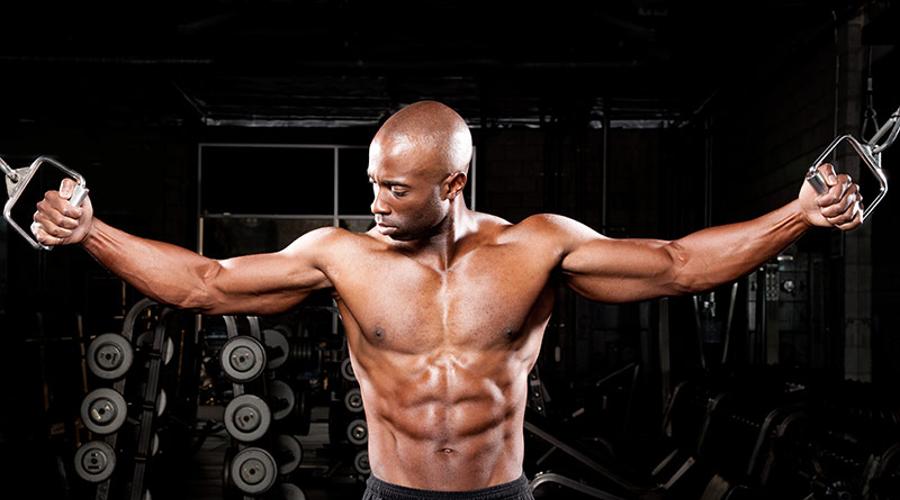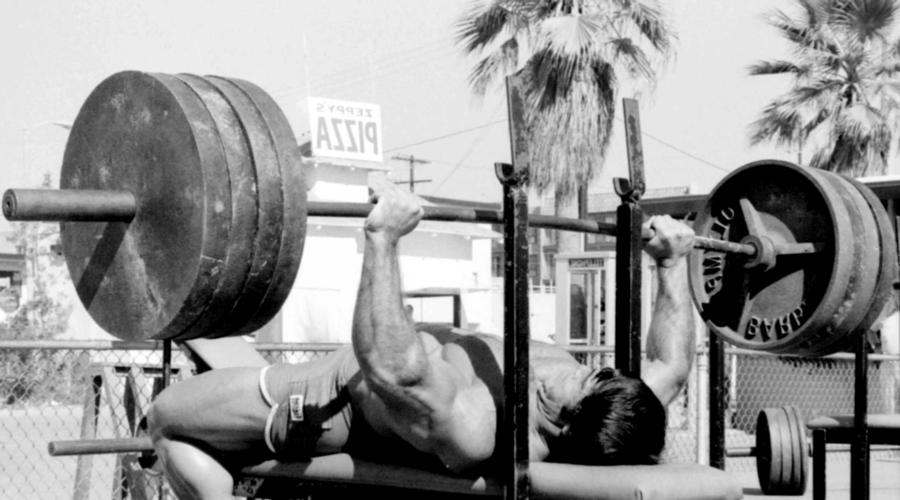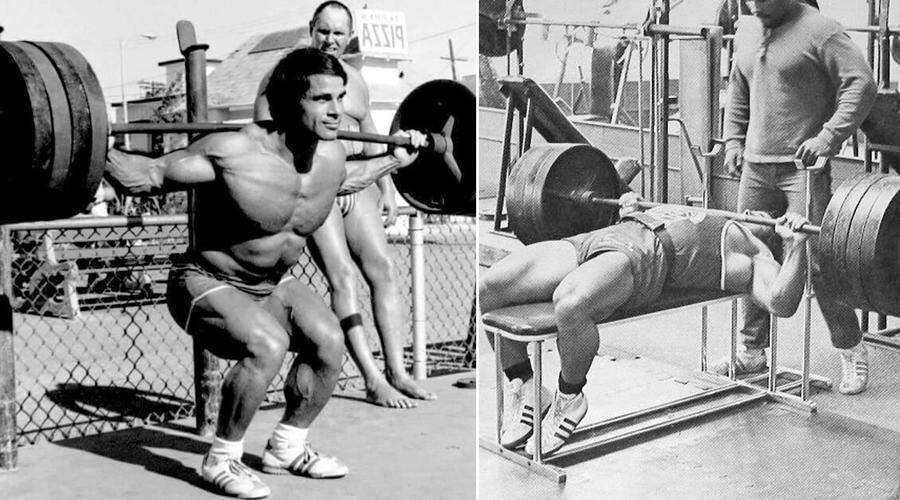
Are you tired of modern, trendy workout routines that promise the world but fail to deliver? If so, it might be time to go back to the basics with an old school powerlifting routine. While it might not have the glitz and glamour of more contemporary workouts, this tried-and-true approach to fitness has been helping people build strength and endurance for decades.
In this blog post, we’ll take a closer look at the benefits of an old school powerlifting routine and show you how to incorporate this training style into your own fitness regimen. From squats and deadlifts to bench presses and pull-ups, we’ll cover the essential exercises that make up a powerlifting program and show you how to maximize your results. Whether you’re a seasoned gym-goer or a beginner looking to build a strong foundation, this post has something for everyone.
So, if you’re ready to revive your strength and take your fitness to the next level, read on and discover the power of an old school powerlifting routine.
What is an Old School Powerlifting Routine?
An old school powerlifting routine is a traditional approach to strength training that involves performing compound exercises with heavy weights to build muscle mass and improve overall strength and power. The term “old school” refers to the fact that this style of training has been around for decades and was popularized in the 1960s and 1970s by legendary powerlifters like Arnold Schwarzenegger, Franco Columbu, and Lou Ferrigno.
An old school powerlifting routine typically involves exercises such as squats, deadlifts, bench presses, and overhead presses, which are performed for multiple sets and low reps with maximum weight. The goal of this type of training is to increase your one-rep max in each of these exercises over time, which can lead to significant gains in strength and muscle size.
While there are many variations of old school powerlifting routines, they typically focus on building a strong foundation of strength through the use of basic, heavy exercises. This approach to training has stood the test of time and is still popular today among bodybuilders, powerlifters, and fitness enthusiasts who are looking to build muscle and improve their physical performance.
Read more about Master Powerlifting Exercises

The Advantages of Traditional Powerlifting Workouts
Traditional powerlifting workouts offer several advantages for those looking to improve their strength and overall fitness. Here are some of the key benefits:
- Increases Strength: One of the primary advantages of powerlifting is that it helps to increase overall strength by focusing on heavy, compound exercises. By consistently challenging your muscles with progressively heavier weights, you can develop greater muscular strength and endurance.
- Builds Muscle Mass: Powerlifting workouts are also great for building muscle mass. Compound exercises like squats, deadlifts, and bench presses work multiple muscle groups simultaneously, allowing you to gain muscle in multiple areas of your body.
- Boosts Metabolism: Traditional powerlifting workouts can also help to boost your metabolism, which can aid in weight loss and body recomposition. The increased muscle mass you gain from powerlifting workouts can help to burn more calories even when you’re at rest.
- Improves Bone Density: Powerlifting can also improve bone density, which can help prevent osteoporosis and other bone-related conditions. By regularly lifting heavy weights, you’re placing stress on your bones and stimulating the production of new bone tissue.
- Enhances Athletic Performance: Powerlifting can also improve your overall athletic performance by increasing your strength, power, and endurance. Whether you’re an athlete looking to improve your performance on the field or a fitness enthusiast looking to take your workouts to the next level, powerlifting can help you achieve your goals.
Overall, traditional powerlifting workouts offer numerous benefits for those looking to improve their strength, build muscle, and enhance their overall physical performance. By incorporating these exercises into your regular workout routine, you can see significant gains in your strength and overall fitness.
Essential Exercises for a Powerlifting Workout
Powerlifting workouts typically involve a few essential exercises that are critical for building strength, muscle mass, and power. Here are some of the most important exercises that make up a powerlifting routine:
- Squats: The squat is often considered the king of all exercises and is a cornerstone of powerlifting workouts. Squats work the muscles in your legs, hips, and core and are excellent for building lower body strength and power.
- Deadlifts: Deadlifts are another essential powerlifting exercise that works the muscles in your legs, hips, and back. Deadlifts are great for building overall strength and power and are often used to test maximal strength.
- Bench Presses: The bench press is a classic powerlifting exercise that works the muscles in your chest, shoulders, and triceps. Bench presses are an excellent exercise for building upper body strength and power.
- Overhead Presses: Overhead presses are a compound exercise that work the muscles in your shoulders, triceps, and upper back. Overhead presses are great for building upper body strength and can also help to improve posture and shoulder stability.
- Pull-Ups: Pull-ups are an essential exercise for building upper body strength and improving overall fitness. Pull-ups work the muscles in your back, shoulders, and arms and are great for improving grip strength and endurance.
- Rows: Rows are another essential exercise for building upper back and shoulder strength. Rows can be performed with dumbbells, barbells, or a cable machine and are great for improving posture and reducing the risk of injury.
Overall, these exercises form the foundation of a powerlifting workout routine and should be performed with heavy weights and low reps to maximize strength and power gains. By incorporating these exercises into your routine, you can build a strong, muscular physique and take your fitness to the next level.

Incorporating Powerlifting into Your Fitness Routine
If you’re interested in incorporating powerlifting into your fitness routine, here are some practical tips to help you get started:
- Start with the basics: Begin with the foundational exercises of powerlifting, such as squats, deadlifts, and bench presses. Mastering proper form is crucial for preventing injury and maximizing gains.
- Focus on heavy weights and low reps: Powerlifting workouts typically involve working with heavy weights for low reps, usually between 1 and 6. Focus on increasing weight over time while maintaining proper form.
- Use a progressive overload approach: To see gains in strength and muscle mass, gradually increase the weight you’re lifting over time. This is known as progressive overload and is a fundamental principle of powerlifting.
- Consider hiring a coach: A powerlifting coach can help you develop a personalized training program, correct your form, and provide feedback and guidance to help you reach your goals.
- Prioritize recovery: Rest and recovery are just as important as training. Make sure to get enough sleep, eat a balanced diet, and give your body time to recover between workouts.
- Supplement with assistance exercises: In addition to the foundational exercises, incorporating assistance exercises such as pull-ups, rows, and overhead presses can help improve strength and build muscle in other areas.
- Be patient and consistent: Powerlifting is a demanding sport that requires dedication and persistence. Results don’t happen overnight, but by staying consistent and patient, you can achieve significant gains in strength and overall fitness.
By incorporating powerlifting into your fitness routine, you can build a strong, muscular physique and improve your overall physical performance. Whether you’re a seasoned gym-goer or a beginner looking to take your workouts to the next level, powerlifting can help you achieve your goals.
Read more about Boxer Physique
Common Mistakes to Avoid
When starting a powerlifting routine, there are several common mistakes that people make. Here are some of the most common mistakes to avoid:
- Skipping Warm-Up and Stretching: Warm-up and stretching are crucial to prevent injury and prepare your body for heavy lifting. Skipping warm-up or stretching can lead to muscle strains or other injuries.
- Poor Form: Lifting with poor form not only reduces the effectiveness of the exercise but also increases the risk of injury. Make sure to learn proper form for each exercise and maintain it throughout the workout.
- Not Resting Enough: Rest and recovery are essential for muscle growth and recovery. Overtraining can lead to injuries and fatigue, so make sure to give your body enough rest between workouts.
- Neglecting Nutrition: Nutrition plays a crucial role in muscle growth and recovery. Not eating enough or not getting enough protein can hinder your progress.
- Only Focusing on Maximal Weight: While lifting heavy weight is essential for powerlifting, it is not the only thing that matters. Make sure to focus on proper form, gradual progression, and a balanced approach to training.
- Neglecting Assistance Exercises: While the foundational exercises are essential, assistance exercises such as pull-ups, rows, and overhead presses can help improve strength and build muscle in other areas.
- Not Seeking Professional Help: Powerlifting is a demanding sport that requires proper technique and guidance. Consider seeking the help of a coach or trainer to ensure you’re performing exercises correctly and reaching your goals safely.
By avoiding these common mistakes, you can reduce the risk of injury and maximize your gains in strength and overall fitness. Make sure to prioritize proper form, nutrition, and rest, and seek help when necessary. With patience, consistency, and dedication, you can achieve significant gains in powerlifting.

Tips for Success
Here are some additional tips to help you succeed in your powerlifting routine:
- Set Realistic Goals: Setting realistic goals is essential for staying motivated and measuring progress. Consider both short-term and long-term goals and track your progress regularly.
- Develop a Routine: Consistency is key to success in powerlifting. Develop a routine that works for you and stick to it. Consider factors such as the frequency of your workouts, the exercises you’ll perform, and how much weight you’ll lift.
- Listen to Your Body: It’s important to listen to your body and adjust your training accordingly. Pay attention to how you feel during and after workouts, and adjust your routine as needed.
- Incorporate Variety: While the foundational exercises of powerlifting are critical, incorporating variety can help prevent boredom and reduce the risk of injury. Consider incorporating different exercises or variations of the foundational exercises into your routine.
- Practice Proper Recovery: Proper recovery is essential for preventing injury and maximizing gains. Make sure to stretch, get enough sleep, and eat a balanced diet to support your training.
- Stay Motivated: Powerlifting can be challenging, but staying motivated is key to success. Consider joining a powerlifting community or finding a workout partner to help stay motivated and hold you accountable.
- Embrace Progression: Progression is essential to success in powerlifting. Embrace gradual progression and don’t get discouraged by small gains. Remember, slow and steady wins the race.
By following these tips, you can set yourself up for success in powerlifting. Remember to stay consistent, listen to your body, and prioritize proper recovery. With dedication and hard work, you can achieve significant gains in strength and overall fitness.
Conclusion
In conclusion, incorporating an old school powerlifting routine into your fitness regimen can provide numerous benefits, including increased strength, muscle mass, and overall physical performance. By focusing on foundational exercises such as squats, deadlifts, bench presses, overhead presses, pull-ups, and rows, you can build a strong, muscular physique and improve your overall fitness.
However, to succeed in powerlifting, it’s important to avoid common mistakes such as poor form, neglecting nutrition, overtraining, and not seeking professional help. Instead, prioritize proper form, rest, nutrition, and gradual progression, and seek guidance when necessary.
By following these tips and staying motivated, you can achieve significant gains in strength and overall fitness with an old school powerlifting routine. Remember to set realistic goals, develop a routine that works for you, and embrace the slow and steady process of progression. With dedication and hard work, you can reach your powerlifting goals and take your fitness to the next level.